Are "Ghost Kitchens" and Delivery the Future of the Restaurant Industry?
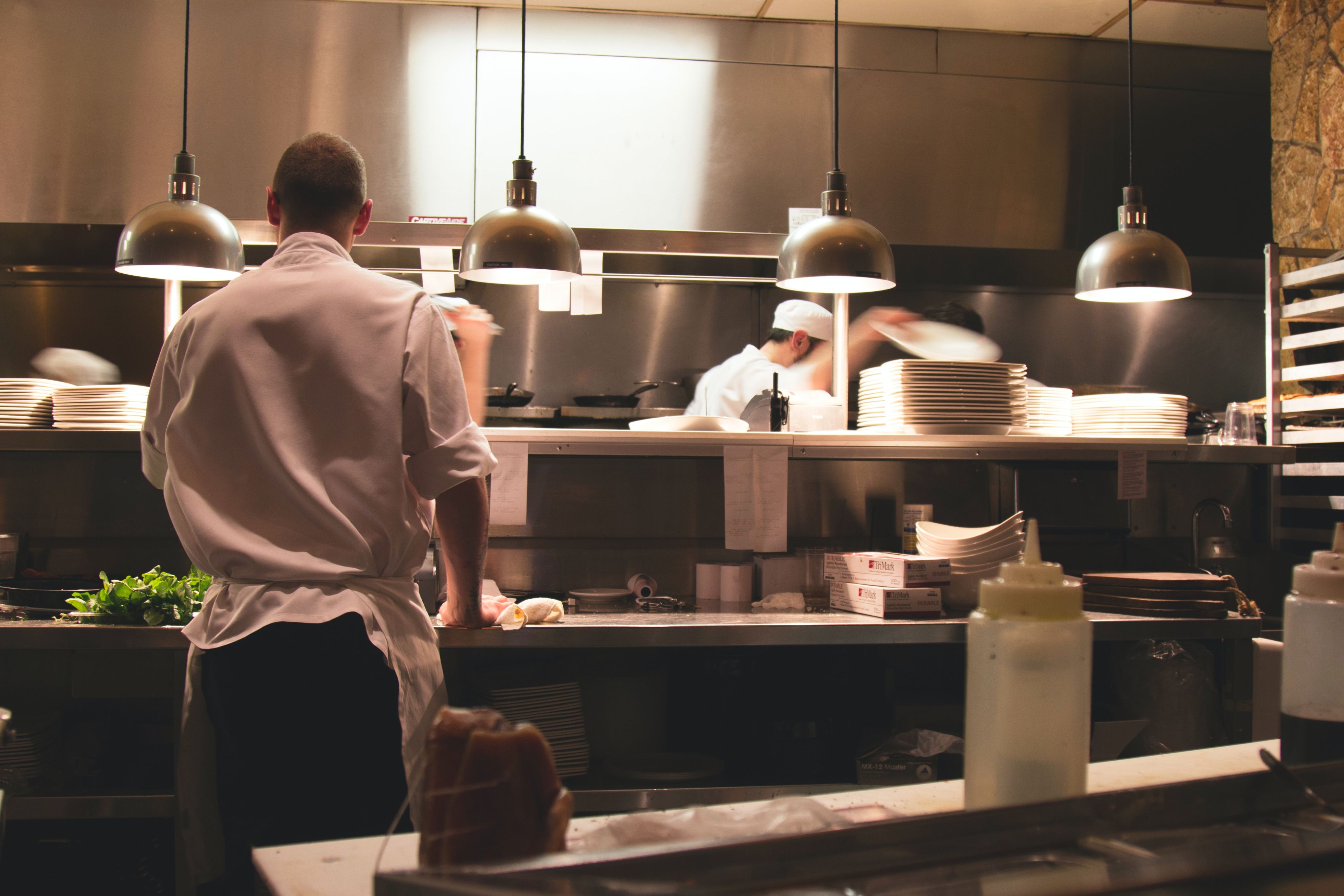
The COVID-19 pandemic has changed the way that society as a whole lives in numerous ways, one of which being the way that people get food from a restaurant. Due to lockdowns and social distancing requirements, many restaurants turned to delivery and takeout services as their main method of business during the peak of the pandemic.
What are the Pros and Cons of Delivery?
From the customer’s perspective, there are plenty of reasons why a restaurant offering a delivery or takeout option is useful. One of the most important benefits for customers is that it offers convenience. For many who work and have children, getting food delivered is much easier than coming home and getting ready to go back out to a restaurant.
“I think that in-person [dining] is best for going out with a partner or friends, but I typically go with delivery because I work labor and get exhausted by the end of the day, so I don’t want to go back out,” said Chris Von Achen, a food safety educator.
However, there are reasons why delivery may not be the best option, both financially and environmentally. Delivery apps like DoorDash, Postmates, and Uber Eats include extra service and delivery fees with their orders. While the severity of the fees varies by restaurant, some food orders nearly double in price when ordered for delivery.
Additionally, there are environmental concerns with ordering food for delivery. Many restaurants use plastic bags and other single-use plastics like forks, spoons, and condiment packets. According to the Environmental Protection Agency (EPA), over 23% of the materials in landfills are containers and packaging.
While not all of this waste is from restaurants, there is still a carbon footprint that comes with ordering delivery food. Some delivery apps have made it possible to not send plasticware, but that does not entirely erase the single-use plastics present in ordering takeout and delivery
Despite some of these concerns, the restaurant industry has found great use in delivery sources. One such use is known as ghost kitchens.
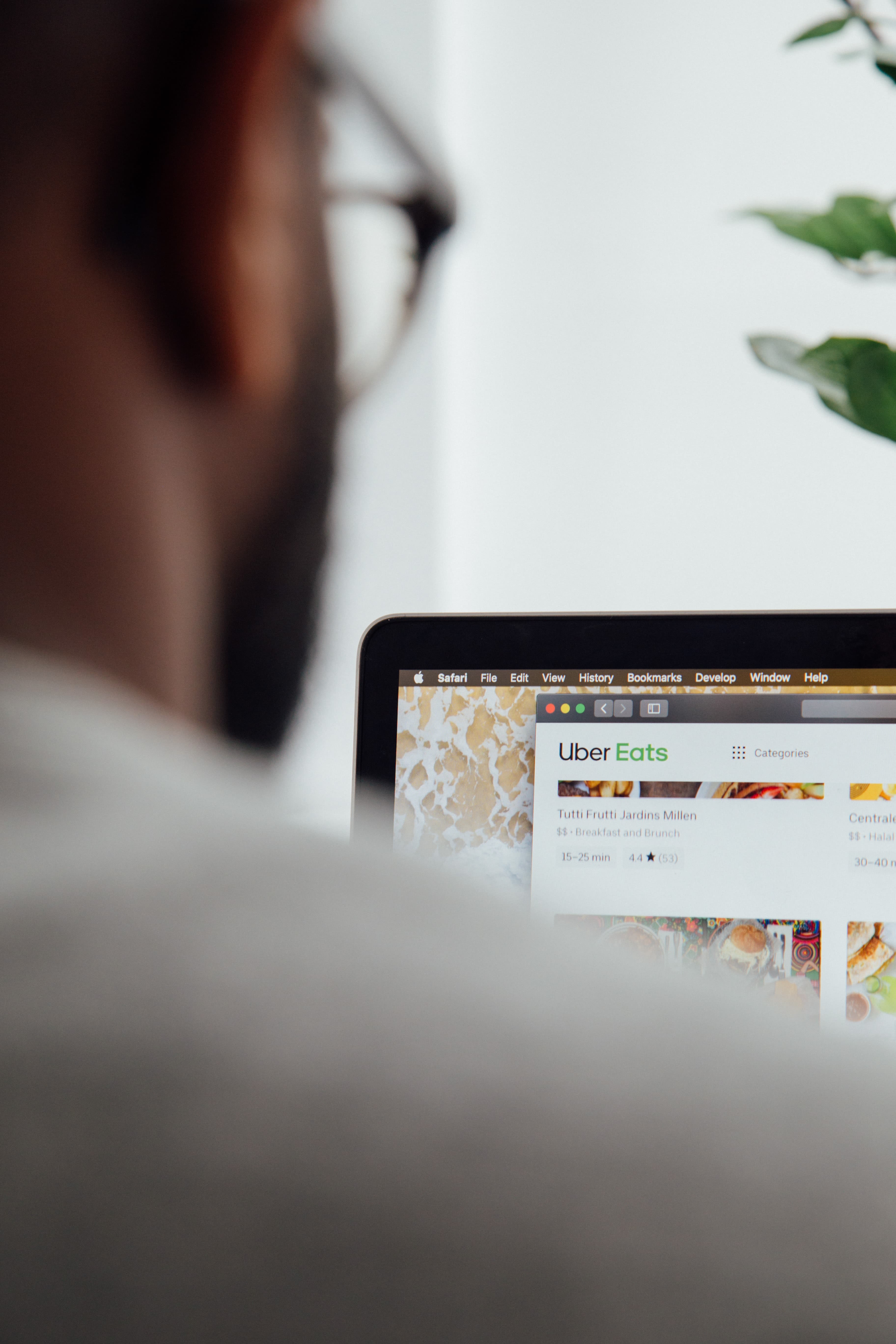
Delivery Apps like Uber Eats, Doordash, and Postmates are used to help carry out the deliveries from ghost kitchens. Credit: Charles Deluvio.
Delivery Apps like Uber Eats, Doordash, and Postmates are used to help carry out the deliveries from ghost kitchens. Credit: Charles Deluvio.
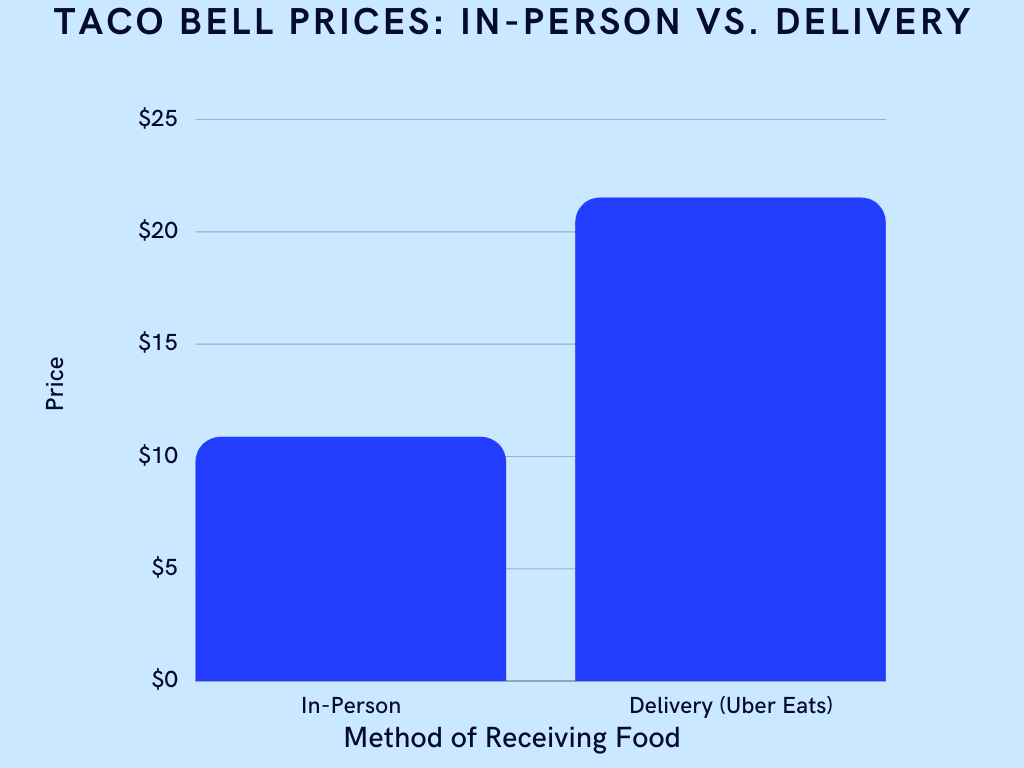
To test the differences in price between dining in person and ordering for delivery, I ordered the same items from Taco Bell both in person and on Uber Eats. While the food came out to $10.85 in person, it was nearly double that on Uber Eats, at $21.50 after a tip. Credit: Daniel Lopes.
To test the differences in price between dining in person and ordering for delivery, I ordered the same items from Taco Bell both in person and on Uber Eats. While the food came out to $10.85 in person, it was nearly double that on Uber Eats, at $21.50 after a tip. Credit: Daniel Lopes.
What are Ghost Kitchens?
Ghost kitchens are spaces that are rented out to online brands whose sole business is making food for delivery and online orders. These brands use the space to make food for delivery services to pick up, but have no place for customers to have an in-person dining experience.
“Often those spaces are not designated with any sort of consumer branding or anything that would make someone know what kind of food is being cooked inside,” said Kristen Hawley, the founder of Expedite, a newsletter about restaurant technology. “Sometimes a ghost kitchen can be a commissary location that houses multiple brands.”
A benefit of ghost kitchens is that they allow smaller businesses to have easier access to the restaurant industry without having to deal with the extra costs of handling a full, dine-in restaurant.
“There are whole communities that don’t have the capital to enter this kind of market. There’s a whole equality aspect to it,” said Derek Salvucci, a Data Scientist and Product Manager. “It just makes it possible for more and more people to enter the space.”
While many of these kitchens exist as an unbranded entity for small businesses to operate out of, there is also a corporate aspect to it. In the past year, chain restaurants have experimented with ghost kitchen concepts in addition to their existing restaurants. One example is Chili’s, who added the brand “It’s Just Wings” in June of 2020.
“With ‘It’s Just Wings,’ Chili’s is reaching customers that they wouldn’t have reached otherwise with their core product,” Hawley said. “That’s a big value proposition for a restaurant that wants to adopt a virtual brand.”

Caption: Restaurants like Chili’s have begun to look to delivery-only ghost kitchen concepts, introducing “It’s Just Wings” in 2020. Credit: Daniel Lopes.
Caption: Restaurants like Chili’s have begun to look to delivery-only ghost kitchen concepts, introducing “It’s Just Wings” in 2020. Credit: Daniel Lopes.

Caption: Restaurants like Chili’s have begun to look to delivery-only ghost kitchen concepts, introducing “It’s Just Wings” in 2020. Credit: Daniel Lopes.
Caption: Restaurants like Chili’s have begun to look to delivery-only ghost kitchen concepts, introducing “It’s Just Wings” in 2020. Credit: Daniel Lopes.
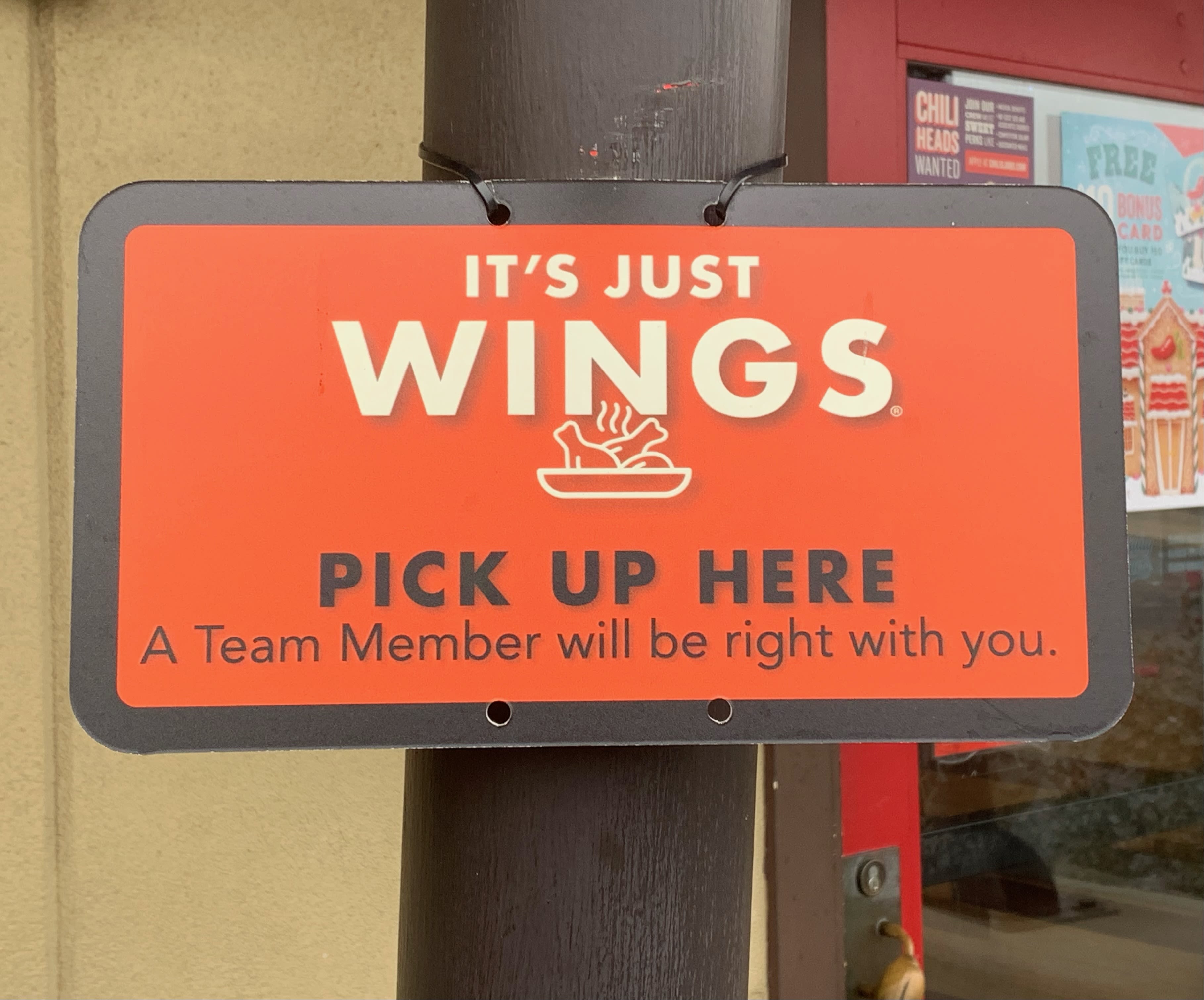
Caption: Restaurants like Chili’s have begun to look to delivery-only ghost kitchen concepts, introducing “It’s Just Wings” in 2020. Credit: Daniel Lopes.
Caption: Restaurants like Chili’s have begun to look to delivery-only ghost kitchen concepts, introducing “It’s Just Wings” in 2020. Credit: Daniel Lopes.
Are Ghost Kitchens the Future of the Restaurant Industry?
While ghost kitchens have existed since before the COVID-19 pandemic, they have only grown in scope since lockdowns began in the United States in 2020. With many aspects of society being put on pause, some people saw ghost kitchens as an opportunity to move into a new venture.
“I don’t think that the pandemic pushed people into ghost kitchens. I think that the pandemic pushed a lot of people into trying something new,” Salvucci said. “Ghost kitchens made the barrier to entry so low that it’s an easy way for you to try it out without a lot of overhead if you were to fail. There’s not a lot of debt relative to owning your own place.”
The industry has begun to pick up financially as well, with commissary kitchen companies receiving investments upwards of $130 million. This growth has caused some speculation and concern that in-person dining could struggle to get investments and compete with ghost kitchens as their popularity continues to rise.
“The big pressure would come from investors. If you look at venture capital, institutional investors and private equity, the things they’re backing are these high-growth, virtual ghost [kitchen] concepts because they can grow in scale so quickly,” said Hawley. “A one or two location restaurant brand and fine dining can’t really compete with those metrics.”
Despite the pressure, Hawley believes that there are two segments to the restaurant industry: one that leans towards convenience and another that leans toward creating an immersive in-person dining experience. While the people that believe in convenience may shift towards ghost kitchens and delivery, there could still be room in the industry for in-person dining.

Delivery and takeout provide customers with a more convenient way to get their favorite foods. Credit: Rosalind Chang.
Delivery and takeout provide customers with a more convenient way to get their favorite foods. Credit: Rosalind Chang.
Do People Want Delivery to be the Standard?
While the industry may be angling towards making delivery the future of the dining experience, the general public may not be as receptive. In a poll conducted by the author on Twitter, 51.2% of 43 voters named in-person dining as their preferred method of eating from a restaurant.
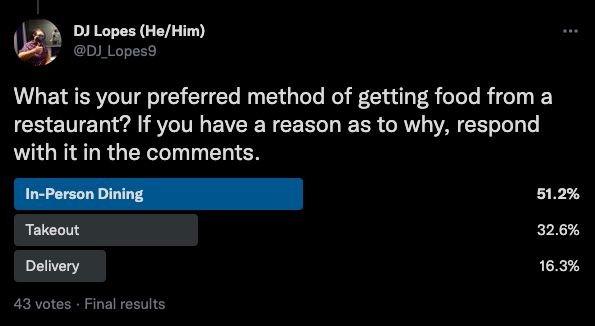
In a poll conducted by the author on Twitter, 51.2% of 43 voters said they preferred in-person dining over takeout and delivery. Credit: Daniel Lopes.
In a poll conducted by the author on Twitter, 51.2% of 43 voters said they preferred in-person dining over takeout and delivery. Credit: Daniel Lopes.
When asked, multiple respondents and interviewees noted that they still like the convenience that comes with ordering delivery or takeout. However, if given the opportunity, they would rather eat in-person.
“I have two small children, so my appetite for delivery in the last five years has increased a ton and I think it’s great that my favorite restaurants that I used to go to will deliver now,” Hawley said. “But, all things being equal, of course I want to go out in person.”
